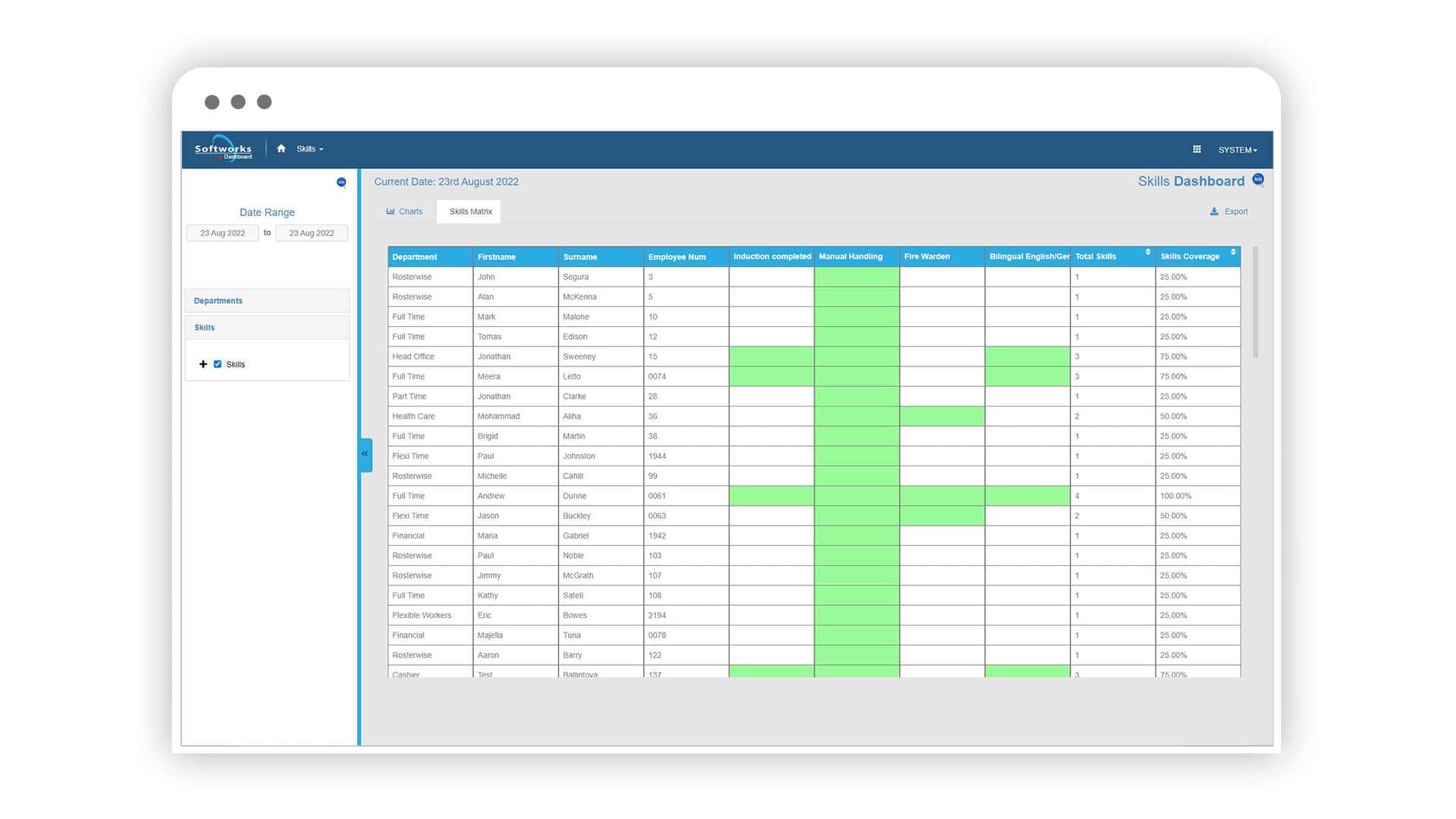The healthcare industry has undergone a remarkable transformation in the wake of the global pandemic. Healthcare organizations have been compelled to swiftly adapt to the challenges posed by Covid-19, necessitating rapid changes, cost assessments, technological investments, and the adoption of flexible and resilient systems. In response to these demands, many healthcare providers are now focusing their efforts on digitalization strategies that aim to improve patient care, enhance decision-making processes, and streamline overall operations.
While digitization primarily involves the conversion of paper-based files, such as patient records, into electronic formats, digitalization takes this process a step further. It harnesses the potential of digital technology to streamline services, reduce costs, and deliver superior quality care to patients. By embracing digitalization, healthcare organizations can leverage innovative solutions to transform their workforce management practices and overcome the challenges posed by the rapidly evolving healthcare landscape.
The Shift from Digitization to Digitalization
In the healthcare industry, the transition from digitization to digitalization represents a significant paradigm shift. While digitization involves the conversion of paper-based files into electronic formats, such as transitioning from paper-based patient records to electronic health records (EHRs), digitalization takes this process to a whole new level. It goes beyond the surface-level conversion of documents and embraces the transformative potential of digital technology to optimize services, reduce costs, and deliver exceptional quality care to patients.
Digitalization in healthcare encompasses a holistic approach that extends far beyond the simple act of going paperless. It involves leveraging advanced technologies, data analytics, and automation to streamline processes, enhance efficiency, and ultimately improve overall outcomes. Digitalization allows healthcare organizations to harness the power of information and technology to drive meaningful change and innovation throughout their operations.
By embracing digitalization, healthcare providers can unlock a multitude of benefits. Streamlining processes through digital tools and automation leads to increased operational efficiency, allowing healthcare professionals to focus more on patient care. For example, the use of electronic health records enables rapid access to patient information, facilitating timely decision-making and enhancing care coordination among different healthcare providers.

Furthermore, digitalization in healthcare can significantly contribute to cost reduction. By optimizing processes, eliminating paper-based inefficiencies, and leveraging data analytics, healthcare organizations can identify areas where resources are being underutilized or wasted. This enables them to make informed decisions that lead to cost savings and better financial management.
One of the key advantages of digitalization is its ability to improve the quality of care delivered to patients. By leveraging technology, healthcare providers can gain access to real-time data and insights that enable them to make more accurate diagnoses, tailor treatment plans to individual patient needs, and provide personalized care. Digitalization also facilitates the implementation of evidence-based practices, leading to better clinical outcomes and improved patient experiences.
In summary, while digitization is a critical first step in transitioning from paper-based systems to electronic formats, digitalization takes healthcare organizations to the next level. It leverages digital technology to optimize services, reduce costs, and deliver higher-quality care. By embracing the holistic approach of digitalization, healthcare providers can revolutionize their operations, enhance patient outcomes, and thrive in an increasingly technology-driven healthcare landscape.
Key Areas Where a Workforce Management System Can Help Healthcare Organizations
A dedicated Workforce Management System tailored for the Healthcare industry empowers organizations to optimize workforce operations and enhance patient care. From managing time and attendance to streamlining employee scheduling, HR management, leave, compliance, and skills training, these systems revolutionize healthcare workforce management practices.
Employee Time & Attendance Management
Accurately tracking employee time and attendance is crucial for the efficient operation of healthcare organizations. By implementing a dedicated Workforce Management System, healthcare providers can automate and streamline time and attendance management processes, resulting in numerous benefits. This advanced technology enables precise tracking of employee hours, simplifies scheduling adjustments, and enhances payroll accuracy. By automating these tasks, healthcare providers can alleviate administrative burdens, foster greater accountability, and ensure compliance with labor regulations.
A dedicated Workforce Management System empowers healthcare organizations to accurately capture and record employee hours in real-time. Utilizing modern features such as biometric time clocks, mobile applications, or web-based interfaces, the system ensures precise clock-in and clock-out times. This eliminates the need for manual time tracking, minimizing the risk of errors or discrepancies in attendance records.
In addition to accurate time and attendance tracking, a Workforce Management System enhances payroll accuracy. The system automates the calculation of worked hours, overtime, and shift differentials, minimizing payroll errors and ensuring that employees receive accurate compensation. This streamlined payroll process reduces administrative burdens and enhances the efficiency of payroll operations within healthcare organizations.
In summary, the implementation of a dedicated Workforce Management System empowers healthcare organizations to accurately track and manage employee time and attendance. By automating these processes, healthcare providers can reduce administrative burdens, foster accountability, and ensure compliance with labor regulations. This not only improves operational efficiency but also allows healthcare professionals to focus on delivering high-quality care to patients.
Employee Scheduling
Efficient staff scheduling is paramount in the healthcare industry to ensure adequate coverage and maintain optimal patient care. A Workforce Management System specifically tailored for the healthcare sector simplifies and automates the scheduling process, revolutionizing how healthcare providers manage their workforce. By considering crucial factors such as staff availability, skill sets, and patient acuity, the system generates optimized schedules that minimize conflicts, reduce overtime costs, and enhance overall operational efficiency.
With a Workforce Management System in place, healthcare organizations can efficiently match the right healthcare professionals with patient needs. The system takes into account patient acuity, staff availability, and their preferences, certifications, and qualifications to create schedules that optimize resources and ensure appropriate staffing levels at all times. By leveraging automation and intelligent scheduling algorithms, the system eliminates the manual effort and guesswork often associated with scheduling, freeing up valuable time for managers to focus on other critical tasks.
Optimizing scheduling with a dedicated Workforce Management System also leads to cost savings. The system provides real-time visibility into staffing needs, allowing managers to allocate resources efficiently and minimize unnecessary overtime expenses. By eliminating manual errors and ensuring compliance with labor regulations, the system improves payroll accuracy, further contributing to cost reduction.
A tailored Workforce Management System for healthcare simplifies and automates employee scheduling. By considering staff availability, skills, and patient acuity, the system generates optimized schedules, minimizing conflicts, reducing overtime costs, and improving efficiency. This technology ensures the right professionals are matched to patient needs, enhancing care, streamlining operations, and achieving cost savings.
HR Management
Digitalizing HR management processes offers numerous advantages for healthcare organizations. This centralized system empowers HR departments to streamline administrative tasks, monitor employee performance, and ensure compliance with regulations. By leveraging technology, HR teams can shift their focus to strategic initiatives that foster organizational growth and enhance employee well-being.
With a Workforce Management System in place, healthcare organizations can consolidate all employee data into a centralized platform. This eliminates the need for scattered spreadsheets and manual record-keeping, enabling HR departments to efficiently access, update, and manage personnel information.
By automating administrative tasks, a Workforce Management System frees up valuable time and resources for HR departments. This enables HR professionals to focus on strategic initiatives that drive organizational growth and support employee well-being. They can dedicate more attention to talent management, employee development, and fostering a positive workplace culture. The system also simplifies and streamlines HR workflows, improving efficiency and allowing HR teams to be more proactive and responsive in addressing employee needs and concerns.
Leave Management
Efficiently managing employee leave is essential in the healthcare industry to maintain optimal staffing levels and ensure uninterrupted patient care. A dedicated Workforce Management System offers a centralized platform for requesting, approving, and tracking leave requests, revolutionizing the leave management process. By automating these processes, healthcare organizations can reduce administrative overhead, enhance accuracy, improve transparency, and optimize workforce planning to effectively manage leave.
A Workforce Management System simplifies and streamlines the process of requesting and approving leave. Employees can submit leave requests electronically through the system, eliminating the need for paper-based forms or manual processes. This not only saves time but also reduces the risk of errors and misplaced paperwork. Managers can easily review and approve leave requests, with automated notifications and reminders ensuring timely decision-making.
Moreover, a Workforce Management System with integrated absence management functionalities helps healthcare organizations identify patterns and trends in leave usage. This data-driven approach allows managers to proactively manage leave and mitigate leave abuse. By monitoring patterns of frequent or unplanned absences, healthcare organizations can identify potential issues and take appropriate actions to maintain workforce productivity and fairness.
In summary, a dedicated Workforce Management System streamlines and automates leave management processes in healthcare organizations. By providing a centralized platform for leave requests, approvals, and tracking, the system reduces administrative overhead, enhances accuracy, and improves transparency. Integrated absence management functionalities help identify patterns, mitigate leave abuse, and optimize workforce planning. By leveraging technology to manage leave effectively and efficiently, healthcare organizations can maintain optimal staffing levels, ensure uninterrupted patient care, and foster a more organized and productive work environment.
Regulatory Compliance
Compliance with regulations is paramount in the healthcare sector to maintain ethical practices, patient safety, and organizational integrity. A Workforce Management System tailored specifically for healthcare organizations plays a vital role in ensuring adherence to labor laws, industry-specific regulations, and accreditation standards. By leveraging this system, healthcare providers can achieve real-time visibility into workforce data, efficiently track certifications and training requirements, and generate comprehensive compliance reports. Automating compliance-related processes through the system enables healthcare organizations to mitigate risks, avoid penalties, and uphold high standards of patient care.
A dedicated Workforce Management System provides real-time visibility into crucial workforce data, such as employee credentials, licenses, and certifications. By centralizing this information, healthcare providers can easily monitor and track compliance with industry-specific regulations and accreditation standards. The system sends automated alerts and notifications, ensuring that employees’ credentials remain up-to-date and in compliance with regulatory requirements.
Efficiently tracking certifications and training requirements is essential in maintaining compliance in the healthcare industry. A Workforce Management System simplifies this process by automating the tracking and management of employee certifications, licensures, and training records. The system monitors expiration dates, sends reminders for renewal, and ensures that employees maintain the necessary qualifications to perform their roles effectively. This helps healthcare organizations stay in compliance with regulatory bodies and maintain high standards of patient care.
The generation of comprehensive compliance reports is made seamless with a Workforce Management System. The system collects and consolidates data on employee certifications, training completion, and compliance status, allowing for easy generation of reports. These reports provide a clear overview of compliance efforts, making it easier for healthcare organizations to demonstrate adherence to labor laws, industry regulations, and accreditation standards during audits or inspections. This not only helps in avoiding penalties but also enhances the reputation and credibility of the organization.
Automating compliance-related processes through a Workforce Management System offers several advantages to healthcare providers. It reduces the risk of human errors and ensures that compliance tasks are consistently and accurately executed. By streamlining compliance processes, healthcare organizations can allocate resources more efficiently, freeing up valuable time for staff members to focus on patient care and strategic initiatives. Moreover, the system’s automated features promote proactive compliance monitoring, reducing the likelihood of non-compliance issues arising.
Skills & Training Management
A proficient and skilled healthcare workforce is essential for delivering high-quality patient care. Continuous professional development and skills enhancement are key factors in maintaining a knowledgeable and capable healthcare team. A Workforce Management System empowers healthcare organizations to effectively manage employee training requirements, track certifications and competencies, and plan and deliver targeted training programs.
By automating skills and training management processes, the system ensures that healthcare workers possess the necessary qualifications to perform their roles effectively, leading to enhanced care quality, increased employee satisfaction, and support for career progression within the organization.
The system serves as a centralized platform for managing employee skills and training requirements. It enables healthcare organizations to track and document employee certifications, licenses, and competencies in one place. This eliminates the need for manual record-keeping and simplifies the process of monitoring and maintaining up-to-date training records. The system provides real-time visibility into employee skill sets, allowing healthcare providers to assess the expertise available within their workforce.
By automating skills and training management, the system helps healthcare organizations identify skill gaps and training needs. It provides insights into areas where additional training or development is required, enabling targeted interventions to bridge those gaps. By analyzing workforce data, healthcare providers can identify trends, patterns, and areas of improvement, which can inform the creation of personalized development plans for employees. This proactive approach ensures that training efforts are aligned with organizational goals and individual career aspirations.
By leveraging technology to automate skills and training management, healthcare organizations can foster a culture of continuous learning and improvement, ultimately benefiting both employees and patients.
Conclusion
In summary, the digitalization of workforce management in healthcare is a transformative process that empowers organizations to optimize operations, enhance patient care, and ensure organizational success. By implementing a dedicated Workforce Management System tailored for the healthcare industry, organizations can streamline administrative tasks, improve scheduling accuracy, simplify HR processes, manage leave efficiently, ensure regulatory compliance, and support employee skills development.
This digital transformation brings increased efficiency, improved patient outcomes, and cost savings. Embracing technology-driven solutions tailored to the healthcare industry enables organizations to navigate the complexities of the modern healthcare landscape, fostering innovation, and positioning themselves for continued growth and success.














